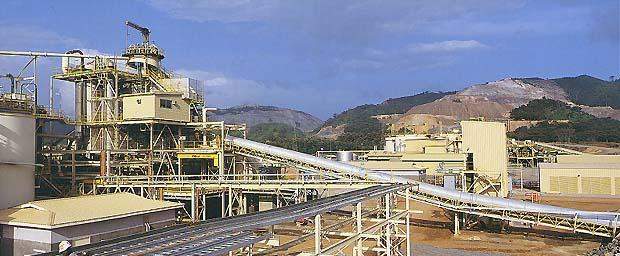In January 2019 Obuasi came alive, with the official reopening of the Obuasi mine of AngloGold Ashanti. The mine had been under “Care and Maintenance” since 2014 when management announced its temporary closure. According to the company, three key reasons necessitated the temporary shutdown. First of all, underground infrastructure, much of which was constructed over 50 years ago had not seen any significant rehabilitation, putting the lives of the workers at risk. Again, the mine was deemed to be unprofitable. Overhead costs were ballooning, while gold prices kept falling to unsustainable levels. Finally, the productivity of the workers was also called to question. In spite of everything the management did, productivity as measured by ounces of gold mined per month kept going downhill and this became a source of worry for the owners of the mine.
For the 5 years that the mine was out of operation the Obuasi community experienced probably its worst economic crisis. The perception of mining communities becoming ghost towns became a reality. Over 6,000 workers of AngloGold were retrenched, and most of these left town to other parts of Ghana. These people sold their houses and other property, shut down their businesses and withdrew their wards from some of the most prestigious private schools in town. The result of this was a city that was only a pale shadow of its former glory. The beautifully well-planned company bungalows were left to rot, providing much needed shelter for reptiles.
The once bustling Obuasi Central Market became a scene of dejected and despondent faces of women who clearly communicated that they had seen better days. Anyinam Roundabout, which had become the entertainment hotspot of Obuasi suddenly, became quiet. The characteristic loud blaring music had been silenced, and replaced by the chirping of exotic birds perching on the trees that lined the main street.
Signs of decay were everywhere, not least in the Central Business District of this once Golden City as luxury shops closed. A slowdown in economic activities also negatively affected the revenues of the Obuasi Municipal Assembly. A research conducted by Centre for Social Impact Studies (CeSIS) in 2017 revealed that the Municipal Assembly saw an almost 30 per cent drop in revenues as a result of the company’s troubles. Because the company was not operating, mineral royalty also ceased.
News of the successful signing of a new Mining Agreement between AngloGold Ashanti and the Government of Ghana was most welcome news. The signs of jubilation that greeted the President, Nana Addo Dankwa Akufo-Addo, Asantehene, Otumfour Osei Tutu II and other dignitaries on that hazy January day were indications of relief at last, that Obuasi will rise again. Expectations were very high, sometimes unrealistically high. For once, the people heaved a sigh of relief that the golden days of Obuasi were coming back.
Young school graduates knew this was going to be their best chance at getting employment in this multinational giant they had lived with for the past 122 years. A caller into an animated radio discussion programme on one of the local stations even asked AngloGold Ashanti to, before the expiration of their 25-year operations, convert Obuasi to the Johannesburg of West Africa!
Much as the expectations are justified, considering what the city has gone through, it remains to be seen whether after the end of the current mine lease Obuasi will become the Johannesburg as expected. Three factors come to play here, if Obuasi will become the giant that all dream about: diversification, linkages and value addition.
Diversification
Managers of the local economy (Obuasi Municipal Assembly and Obuasi East District Assembly) have to make very hard choices about whether it makes good economic sense to hinge the local economy on one mining company. Since 1897 when the then Ashanti Goldfields Corporation started operations, the Obuasi economy has basically been tied to the fortunes of the company. Whenever the company goes through challenges, it affects the health of the local economy. The 2014 – 2019 episode gave a glimpse of the future of Obuasi after the gold is gone.
Rather than just be ecstatic over the return of the mine, it will be useful to set in motion a process that will ensure the creation of additional industries to AngloGold Ashanti. For instance within the mining sector we could have additional small-scale mining companies. We could also tap into our tourism potential to make money for the Municipality.
Of more particular interest is mine tourism that is fetching millions of dollars for countries like Australia and South Africa. The abandoned mines dotted around Obuasi and its environs could be developed and converted to states that could be used to tell the history of mining in Obuasi. Another alternative is to construct a Museum of Gold that will detail the history of gold mining in Obuasi, using audio-visual materials and photographs. Obuasi also has potential for light manufacturing industries as well as food processing. The two assemblies have a responsibility to ensure these potentials are exploited to reduce this heavy dependence on AngloGold Ashanti.
Linkages
A major challenge of natural resource dependent economies is their inability to develop linkages with the wider economy. The mining industry tends to be a standalone economy on its own. It has been described as an “enclave industry”.
A good example of mining being an enclave economic activity is the practice where mining companies choose to house their staff in staff quarters. These company housing estates are usually far better planned with all essential amenities like electricity, water and sanitation facilities. Due to this advantage the company housing has over housing in the township there is very little motivation for homeowners to improve the quality of the housing stock. For instance, there has been an argument that if company workers were to be renting houses in town they could force homeowners to improve the quality of housing. Amazingly some company workers had their families buying their groceries from Kumasi. This clearly deprived the market woman in Obuasi or the shop owners some potential income.
Linkages in the mining sector can be observed through the creation of employment opportunities for local community members, and supply opportunities local businesses. AngloGold Ashanti expects to employ a maximum of 2,500 workers, mostly contract workers. The key question is: how many of these workers will come from the local communities? The company has rolled out a Local Employment Policy that will see all semi-skilled and unskilled labour coming from the communities. This is a requirement that all contractors of the company are mandated to implement. Furthermore the company should give out purchasing and supply contracts to local businesses. Instead of going to Kumasi to purchase rice for workers, the company can make a deliberate effort to purchase them from the women in the market. The benefits of buying locally and from a woman are enormous!
Value Addition
The last leg of the table is value addition. In the mining sector not much value addition is done. All multinational companies in Ghana refine their gold outside the country where they sell them. Is it possible for AngloGold Ashanti to leave a percentage of its gold locally to support the goldsmith business? The local goldsmith business used to be very vibrant up until the 1980s. They supplied the gold jewellery that was used for social events like festivals, weddings and funerals. While the goldsmiths worked on the jewelleries, the women also hawked them in the surrounding villages. It was a sense of pride for every family to have gold jewellery that was passed on from generation to generation.
It was common in traditional circles for jewellery to be given to female family members who were going to get married. After the marriage the jewellery were kept back till another family member is ready to marry.
The biggest market for gold used for jewellery is the small-scale mining sector. Currently all the gold that the few goldsmiths use are sourced from small-scale miners. It has become necessary for government to regularise the operations of these small-scale miners so that they can feed the goldsmith industry, and ultimately the jewellery business. This measure will save the country badly needed foreign exchange used to import jewellery from India and China.
Opportunity to make it Right!
During the period of the crisis from 2014 to 2019, all stakeholders in Obuasi’s development had an opportunity to reflect and think through strategies to ensure the city is saved from any future calamity. Gold is a finite resource. One day we will deplete our reserves. Again, the price of gold on the international market is very volatile. One day the price of gold may plummet to levels that will not make it profitable for AngloGold Ashanti to keep operating. Or, we may encounter a situation like what happened in February 2016 when illegal miners overrun the underground facility of the company virtually making it impossible for the mine to operate. When any of these scenarios plays out, what will happen to Obuasi? Do we have a strategy for “Obuasi Beyond Mining”? If we don’t, then there is no better time to start thinking of something like that. The gold will finish. But our beloved city must survive!

